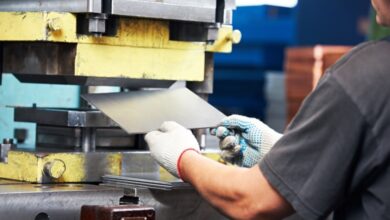
Why Construction Workers Need To Protect Their Hands
Hand protection is a critical aspect of safety in the construction industry, where workers are constantly exposed to a variety of hazards. Encountering everything from sharp tools and heavy machinery to rough surfaces and hazardous materials, the hands are often at the forefront of risks that can lead to injuries or long-term health issues.
Let’s look at why construction workers need to protect their hands and what measures they can take to ensure their safety.
Hazards Faced by Construction Workers
Construction workers are exposed to a range of hazards that can cause harm to their hands. Some common hazards include:
- Cuts and lacerations from sharp tools, such as saws, knives, and blades
- Crushing injuries from heavy machinery or falling objects
- Punctures from nails, screws, or other pointed objects
- Burns from hot materials or chemicals
- Abrasions and blisters from rough surfaces or repetitive motions
- Exposure to hazardous substances like asbestos, lead, or solvents
These hazards can result in various hand injuries ranging from minor cuts and bruises to more serious conditions like fractures, nerve damage, infections, amputations, or even long-term health issues like dermatitis or cancer.
Importance of Hand Protection
Construction workers rely on their hands to perform various tasks, such as lifting heavy objects, operating machinery and tools, and handling materials. Any injury or impairment to their hands can not only affect their ability to work but also their overall quality of life. Wearing proper hand protection is crucial in preventing injuries and ensuring the well-being of construction workers.
Types of Hand Protection
To effectively mitigate the risks associated with hand injuries, construction workers must utilize appropriate hand protection options. There are several types of gloves designed for specific tasks and hazards, including:
- Cut-resistant gloves: Made from materials like Kevlar or metal mesh, these gloves help protect against sharp tools and materials, minimizing the risk of cuts and lacerations.
- Impact-resistant gloves: These gloves feature padding or reinforced materials that protect workers from crushing injuries or impacts caused by heavy machinery and falling objects.
- Chemical-resistant gloves: Designed to safeguard against exposure to hazardous substances, these gloves are often made from materials like nitrile or neoprene, providing a barrier against chemicals, solvents, and oils.
- Heat-resistant gloves: Heat-resistant gloves made from specialized fabrics can protect against burns and scalds when performing tasks involving hot materials or surfaces.
- General purpose gloves: While not specifically tailored for any one hazard, these gloves provide basic protection for a range of activities and are often used for light tasks on construction sites.
Choosing the right type of glove for the specific task at hand is essential for ensuring worker safety and comfort. Regular inspections and maintenance of hand protection gear also play a vital role in effective safety practices on construction sites.
Construction workers need to protect their hands from a variety of hazards that can cause injuries and long-term health issues. Wearing appropriate hand protection is crucial in preventing these risks and ensuring the well-being of workers. Whether you have a job that requires cut-resistant work gloves or chemical-resistant gloves, always remember to prioritize hand protection and safety on the job site. Additionally, proper training, risk assessment, and regular inspections of equipment can go a long way in creating a safer working environment for construction workers.



